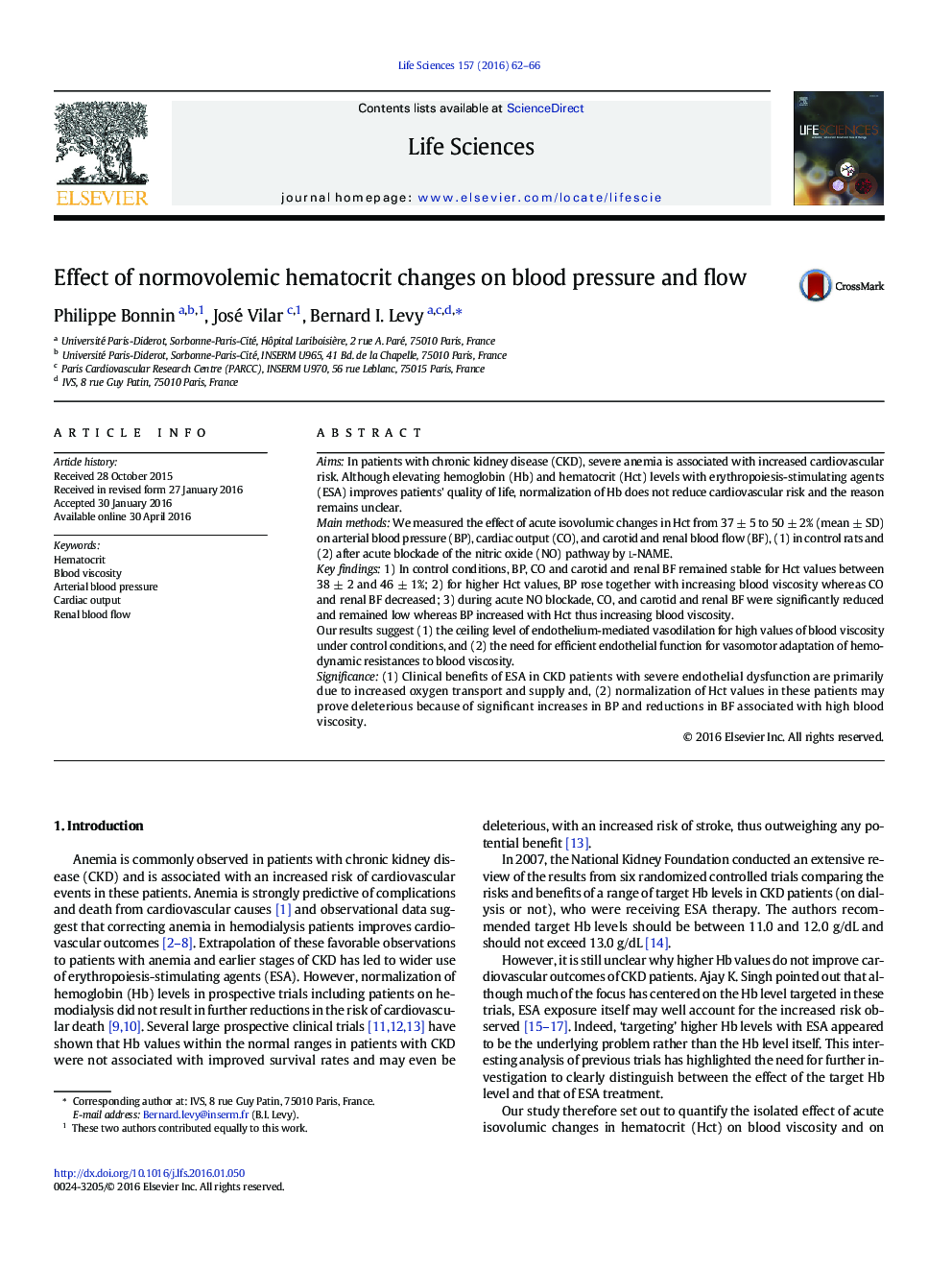| Article ID | Journal | Published Year | Pages | File Type |
|---|---|---|---|---|
| 2550422 | Life Sciences | 2016 | 5 Pages |
AimsIn patients with chronic kidney disease (CKD), severe anemia is associated with increased cardiovascular risk. Although elevating hemoglobin (Hb) and hematocrit (Hct) levels with erythropoiesis-stimulating agents (ESA) improves patients' quality of life, normalization of Hb does not reduce cardiovascular risk and the reason remains unclear.Main methodsWe measured the effect of acute isovolumic changes in Hct from 37 ± 5 to 50 ± 2% (mean ± SD) on arterial blood pressure (BP), cardiac output (CO), and carotid and renal blood flow (BF), (1) in control rats and (2) after acute blockade of the nitric oxide (NO) pathway by l-NAME.Key findings1) In control conditions, BP, CO and carotid and renal BF remained stable for Hct values between 38 ± 2 and 46 ± 1%; 2) for higher Hct values, BP rose together with increasing blood viscosity whereas CO and renal BF decreased; 3) during acute NO blockade, CO, and carotid and renal BF were significantly reduced and remained low whereas BP increased with Hct thus increasing blood viscosity.Our results suggest (1) the ceiling level of endothelium-mediated vasodilation for high values of blood viscosity under control conditions, and (2) the need for efficient endothelial function for vasomotor adaptation of hemodynamic resistances to blood viscosity.Significance(1) Clinical benefits of ESA in CKD patients with severe endothelial dysfunction are primarily due to increased oxygen transport and supply and, (2) normalization of Hct values in these patients may prove deleterious because of significant increases in BP and reductions in BF associated with high blood viscosity.
